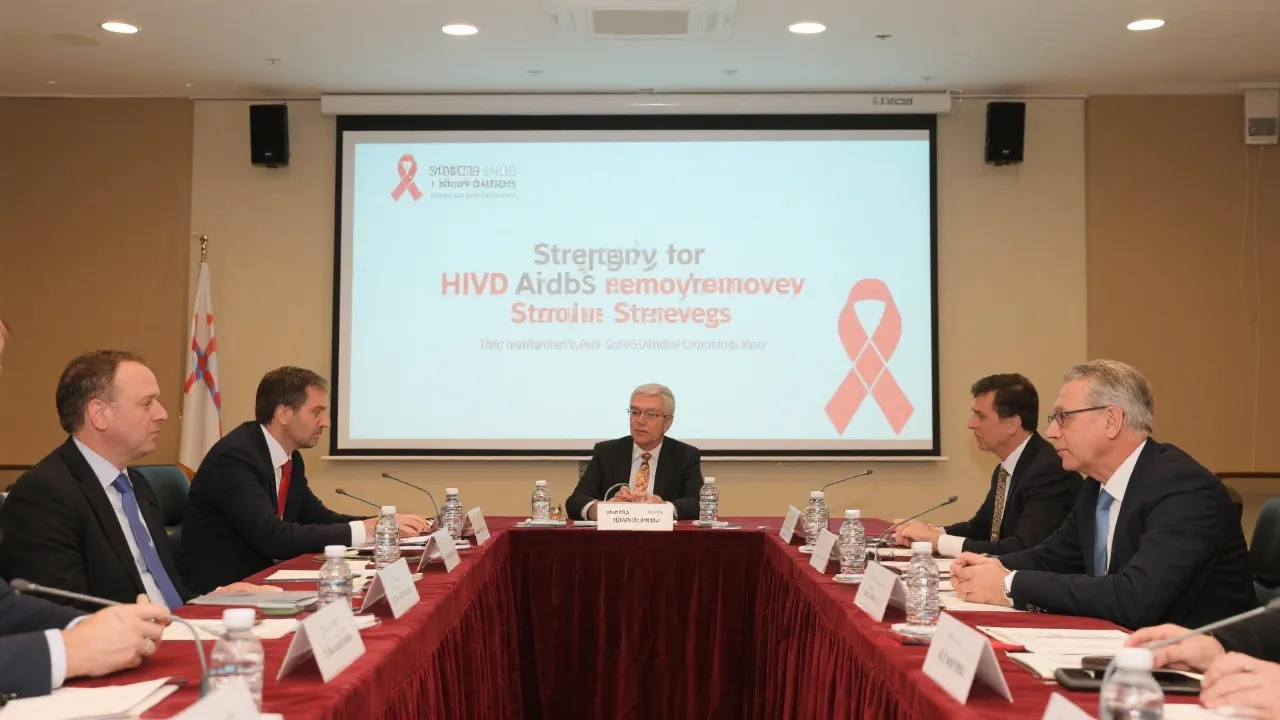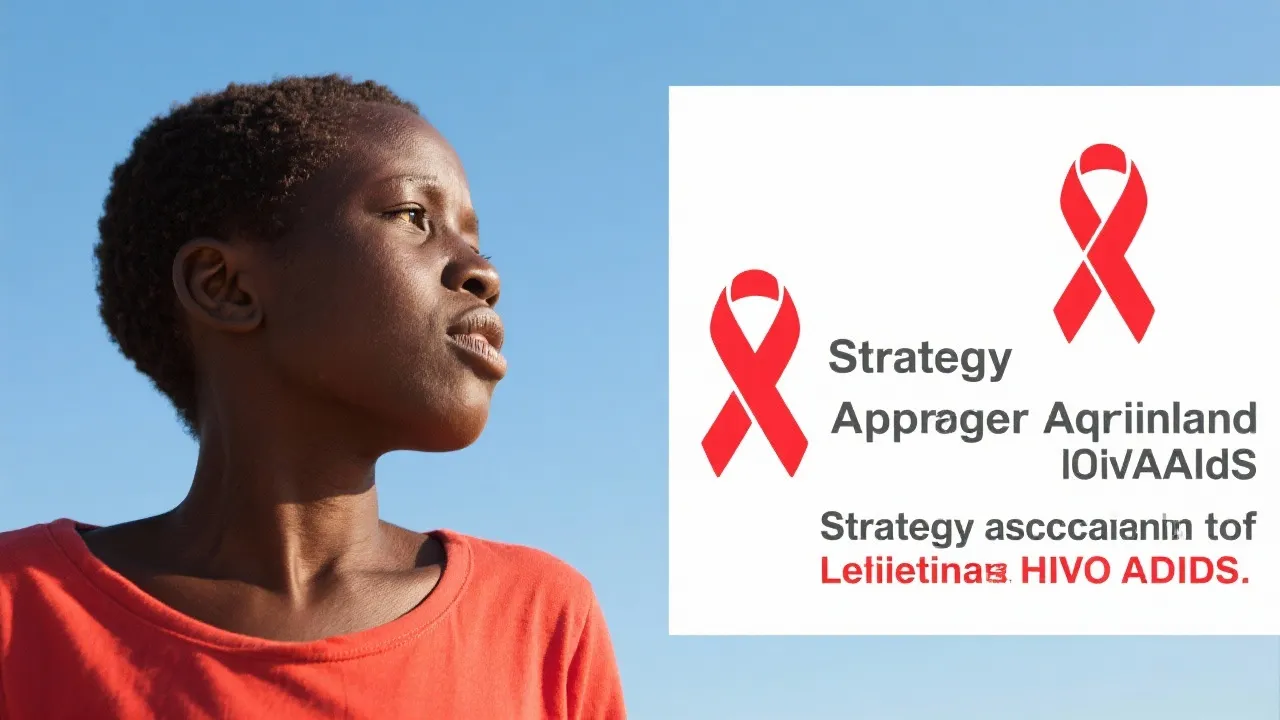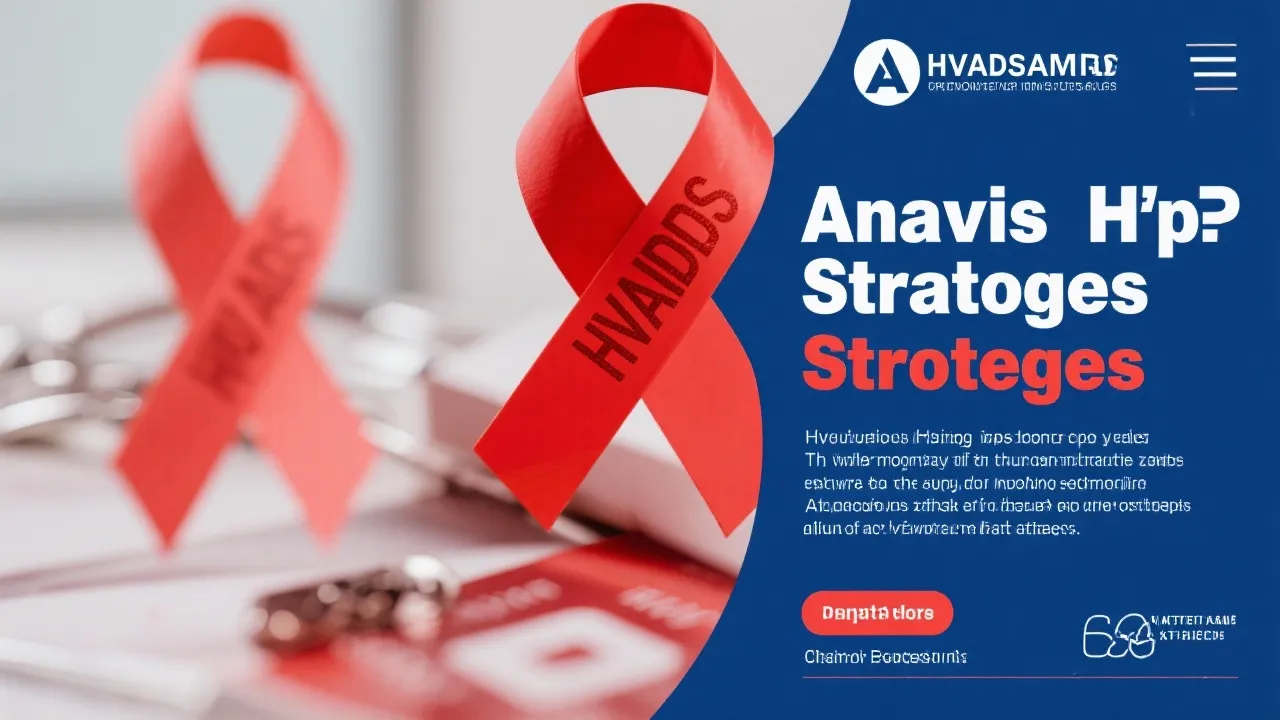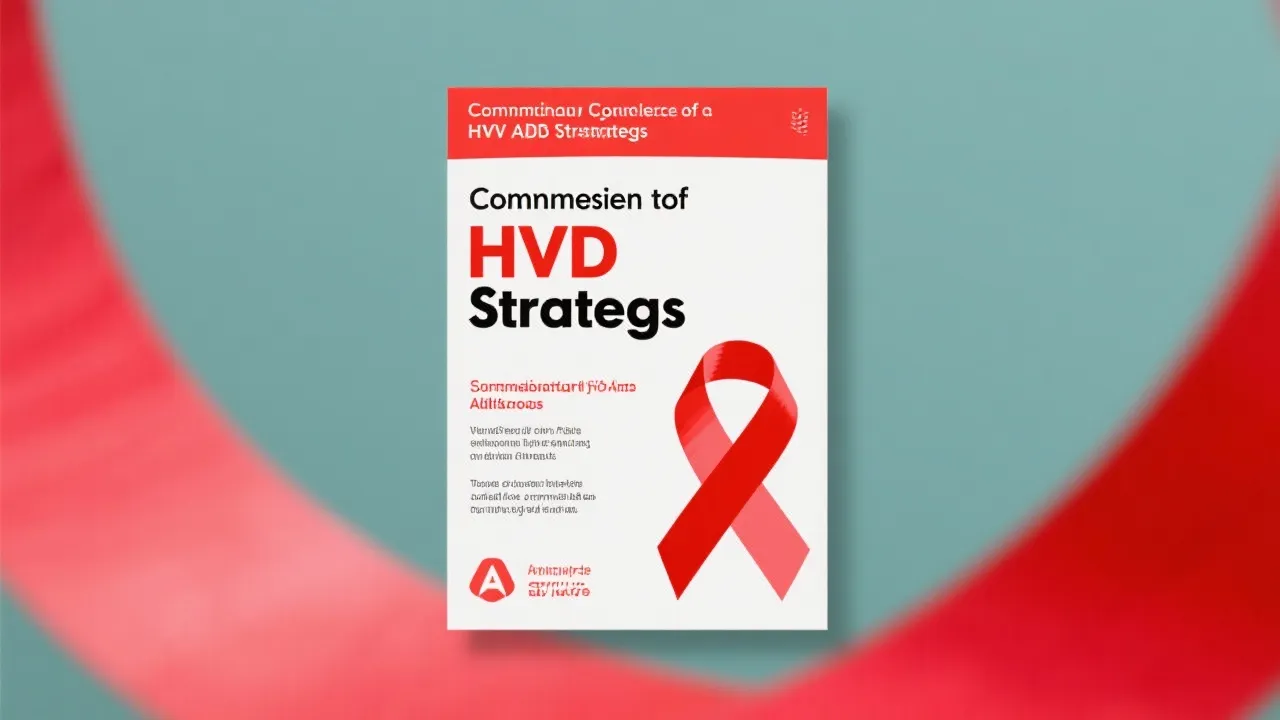Strategies to Alleviate HIV/AIDS Impact
This article examines strategic approaches to alleviating the impact of HIV/AIDS, focusing on public health initiatives, policy implementation, and community involvement. HIV/AIDS remains a significant global health challenge, affecting millions worldwide. Strategies to combat it include prevention education, accessible testing, and treatment programs. Critical to success are international cooperation and sustained funding.

Understanding HIV/AIDS: A Global Challenge
HIV/AIDS continues to be a major public health concern worldwide, affecting millions across different continents. The human immunodeficiency virus (HIV) targets the immune system, leading to acquired immunodeficiency syndrome (AIDS), characterized by severe immune compromise. This compromises the body's ability to fight infections and diseases, leading to increased morbidity and mortality rates among those infected. Efforts to combat this epidemic have evolved over decades, focusing on prevention, treatment, and continuous research in various scientific realms.
The complexity of HIV/AIDS challenges public health systems in every nation. From high prevalence rates in sub-Saharan Africa to rising incidences in Eastern Europe, the socio-economic implications of the epidemic are profound. Countries grapple with the dual burden of managing current health crises while simultaneously investing in long-term infrastructure improvements. Societal attitudes towards HIV also vary, impacting prevention and treatment efforts significantly. Awareness campaigns must therefore be culturally tailored to reduce stigma and enhance acceptance of ongoing medical care.
Strategies Developed to Alleviate HIV/AIDS
Multiple strategies have emerged to address varying aspects of HIV/AIDS, targeting prevention, testing, and treatment. A comprehensive approach intertwines efforts from governmental bodies, non-governmental organizations (NGOs), and community initiatives to create a robust framework tackling the epidemic globally. Each of these entities plays a crucial role in the multifaceted fight against HIV/AIDS, often leading collaborative programs that leverage the strengths of each sector.
Prevention and Education Initiatives
Education remains pivotal in HIV/AIDS prevention. Programs aimed at high-risk populations emphasize safe sex practices, availability of prophylactics like pre-exposure prophylaxis (PrEP), and abstinence (in culturally sensitive contexts). Information dissemination through schools and community centers ensures that awareness reaches diverse audiences. Creative approaches to education, such as the use of social media platforms and peer-led workshops, have proven effective in engaging young people, who are often reluctant to seek traditional methods of information.
Moreover, addressing myths and misconceptions about HIV transmission and prevention is crucial in changing attitudes. Many individuals still harbor outdated beliefs about the virus, often leading to discrimination against those living with HIV. By implementing community-based programs that prioritize knowledge sharing and personal stories from people living with HIV, awareness can grow, and social acceptance can increase. Such initiatives not only inform but also empower individuals to take charge of their sexual health.
Accessible Testing and Diagnostic Services
Regular testing is vital in managing HIV/AIDS, enabling early detection and reducing transmission risks. Many countries have established affordable or low-cost testing centers, integrating rapid testing technology to facilitate quick diagnosis. Encouraging voluntary testing through campaigns reduces stigma and promotes health-seeking behavior. Mobile testing units and community events have also emerged as innovative solutions, making testing more accessible to rural and underserved populations.
In recent years, self-testing for HIV has gained momentum, allowing individuals to conduct tests in the privacy of their homes. This new method significantly reduces the barriers to testing and has shown promise in improving overall testing rates. However, it is essential to accompany self-testing kits with robust follow-up mechanisms. Individuals must have access to counseling services and referral systems for comprehensive care in case of a positive result.
Innovative Treatment Approaches
Modern antiretroviral therapy (ART) has transformed HIV from a fatal disease to a manageable chronic condition. This shift in treatment paradigm has led to a notable increase in life expectancy and quality of life for people living with HIV. The emphasis is on ensuring ART accessibility and adherence through healthcare infrastructure improvements and subsidies for low-income populations. In areas where healthcare systems are overwhelmed, task-shifting strategies enable non-specialized healthcare workers to provide ART, ensuring that patients receive timely and effective treatment.
Moreover, research into long-acting injectables and vaccine development remains a top priority. Recent advancements in long-acting antiretroviral formulations have the potential to revolutionize treatment regimens, reducing pill burden and increasing adherence among patients. As clinical trials progress, the anticipation for a broadly effective HIV vaccine sustains hope among scientists and public health officials alike.
Policy and Advocacy
Effective policy-making involves advocating for human rights and addressing the social determinants of health associated with HIV/AIDS. Legal frameworks supporting anti-stigma laws and promoting anti-discrimination are crucial for creating an environment conducive to healing and prevention. Advocacy efforts targeting policymakers aim to secure sustained funding for HIV programs and ensure equitable access to treatment and care. Furthermore, policies that integrate HIV services into broader health initiatives can help marginalized individuals receive necessary support without fear of stigma.
Community advocacy groups have become increasingly influential in shaping local and national policies regarding HIV/AIDS. These groups often amplify the voices of those most affected by the epidemic, ensuring that their experiences inform policy decisions in meaningful ways. The collaboration between these organizations and public health agencies can lead to more effective and inclusive policy outcomes.
Collaborating for Successful Implementation
Collaborative efforts from governments, international organizations like UNAIDS, NGOs, and community leaders foster an integrated network fighting HIV/AIDS. This synergy encourages knowledge sharing, resource pooling, and maximizes impact. Fundraising initiatives for local health programs often draw support from high-profile global partnerships, further enabling local projects to flourish.
The role of the Global Fund and similar entities cannot be overstated, providing essential financial resources needed for extensive outreach programs. Research has shown that investments in preventive education and treatment access yield significant returns in terms of lives saved and overall health expenditures reduced. Such a model emphasizes the importance of sustained commitment from donor countries, ensuring resources persistently flow to regions disproportionately affected by HIV/AIDS.
Challenges in Combat Strategies
Despite significant advancements, challenges remain, such as dealing with stigma, sustaining funding, and addressing emerging drug resistance. Stigma continues to hinder testing and treatment efforts, preventing individuals from seeking necessary care. Targeted interventions that promote inclusion and acceptance are required to dismantle these barriers. Without proactively addressing stigma through community leadership and educational initiatives, the effectiveness of prevention and treatment efforts can be severely compromised.
Furthermore, sustaining funding for HIV/AIDS programs poses a constant challenge, particularly as governments face competing priorities. Economic downturns often lead to budget cuts in health programs, threatening the gains achieved thus far. Advocacy for sustained financial commitment from both public and private sectors is crucial. Furthermore, innovative funding mechanisms, such as social impact bonds and public-private partnerships, hold potential for ensuring that HIV programs receive the requisite support.
Additionally, drug resistance is becoming an increasingly concern in HIV treatment, complicating management strategies. Continuous surveillance of drug resistance patterns and adaptation of treatment protocols are vital for ensuring patient outcomes are not adversely affected. The development of new drug classes and the potential for personalized medicine based on genetic profiles may provide pathways to overcome resistance challenges.
Urban and rural disparities in healthcare access complicate achieving universal health coverage for all affected populations. In rural areas, healthcare facilities may lack the resources needed to provide adequate HIV prevention, testing, and treatment services. Governments and NGOs must prioritize investments in rural healthcare infrastructure to bridge these gaps. Telehealth initiatives can also serve as a bridge, providing critical access to care for individuals living in remote areas.
Conclusion
Continued vigilance and innovation in strategies designed to alleviate HIV/AIDS are crucial. Realizing impactful change involves relentless efforts across multiple sectors, ensuring education, testing, and treatment remain accessible and effective. A multi-faceted approach promises not only to manage but, eventually, eradicate the epidemic. As we move forward, inclusive policies that prioritize the voices of those most affected are paramount, alongside continual investment in research and community-driven initiatives.
The global response to HIV/AIDS has come a long way; however, there is still considerable work to be done to ensure that individuals are not only informed but also empowered to pursue health outcomes that lead to long, fulfilling lives. Integration of all elements—from prevention strategies to clinical and community partnerships—is essential. Together, they can create a world where HIV/AIDS is no longer a fatal diagnosis but a manageable condition, ultimately paving the way for a healthier future.
FAQs
- What is HIV/AIDS?
HIV is a virus affecting the immune system; if untreated, it progresses to AIDS, a severe immune deficiency characterized by the body's inability to fight infections and diseases.
- How is HIV transmitted?
Transmission occurs through unprotected sexual intercourse, sharing needles, and from mother to child during childbirth or breastfeeding if untreated. Understanding the different transmission pathways is critical for prevention strategies.
- What are the advancements in HIV treatment?
Antiretroviral therapy (ART) is the cornerstone of treatment, effectively managing viral load and improving quality of life for individuals living with HIV. Recent innovations include long-acting injectables.
- How can one prevent HIV infection?
Prevention methods include practicing safe sex, using PrEP, regular testing, and comprehensive education strategies that address all demographics and encourage responsible behavior.
- What are the obstacles in eradicating HIV/AIDS?
Obstacles include stigma, funding shortages, the need for education, and the challenge of emerging treatment-resistant strains of the virus, all of which require dedicated efforts to overcome.
- What role do community organizations play in combating HIV/AIDS?
Community organizations help raise awareness, offer support services, and advocate for policy changes. They are critical in ensuring that the voices of affected individuals are heard and their needs addressed.
- Can HIV be cured?
There is currently no complete cure for HIV, but the infection can be effectively managed through ART. Research is ongoing into potential functional cures and vaccines that could enhance the management of HIV.
- How does socioeconomic status influence HIV outcomes?
Individuals with lower socioeconomic status often face barriers to accessing prevention, testing, and treatment services. Addressing these socio-economic disparities is critical for improving health outcomes for all population segments.




